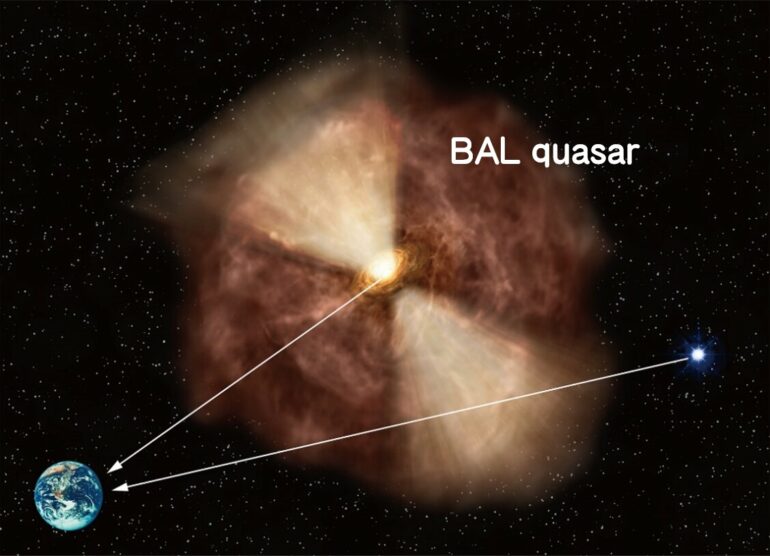A team led by Prof. Toru Misawa of the School of General Education, Shinshu University found for the first time that the internal donut-shaped structure of the central nuclei of bright galaxies in the distant universe can have an “anisotropic” effect on the gas distributed over a vast area around them.
Because luminous nuclei of distant galaxies (quasars) emit strong ultraviolet radiation, they ionize hydrogen gas (intergalactic gas) around them. If the quasar’s UV radiation is isotropic, the “ionization level” of intergalactic gas should be almost constant regardless of the direction seen from the quasars. However, previous studies have reported that the ionization level is biased depending on the direction.
Therefore, the team investigated the origin of the anisotropic ionization level by targeting unique objects called “BAL quasars,” whose direction of ultraviolet radiation can be estimated to some extent. Specifically, the team measured the ionization level of intergalactic gas in the transverse direction of a foreground BAL quasar, by observing another quasar in the background.
As a result of new observations with the Subaru Telescope in addition to the existing data, the team has found that the donut-shaped shielding structure (dust torus) of quasars is likely to cause the anisotropy of the ionization level. The dust torus is the indispensable structure of the standard quasar model.
Thus, the above results observationally support the existence of a dust torus and suggest that its effects may extend to distant intergalactic gas. They are also important for exploring the history of ionization of the entire universe and studying the internal structure of quasars.
The results of this research were published in The Astrophysical Journal.
More information:
Toru Misawa et al, Exploratory Study of the Transverse Proximity Effect around BAL Quasars, The Astrophysical Journal (2022). DOI: 10.3847/1538-4357/ac7715
Provided by
Shinshu University
Citation:
Unraveling the mystery of the quasar’s ‘anisotropic’ effects on surrounding gas (2022, July 22)
